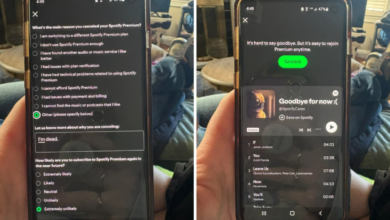Blowing your nose might just be making your cold worse; here’s what you’re doing wrong and alternatives to try

This flue season, many of us have braced for the inevitable cold, often accompanied a blocked or runny nose. It’s annoying and inconvenient, and the natural instinct is to blow your nose to find some relief. But did you know that blowing your nose incorrectly might actually make things worse? Here’s the science behind it and how to handle your cold more effectively. Blowing your nose might just be making your cold worse The science behind nose-blowingOur noses produce 1 to 2 litres of mucus daily but when we’re sick the mucus thickens to trap viruses. Blowing your nose can provide temporary relief expelling this mucus, but it’s important to do so correctly since forceful nose blowing may worsen cold symptoms instead of easing them. According to ear, nose, and throat (ENT) specials, forceful blowing can push mucus back into the sinuses, potentially making the infection worse. A study in 2000 used dye to track the movement of mucus when participants blew their noses and imaging scans revealed that the mucus often travelled back into the sinuses instead of being expelled, potentially worsening the infection. So while you might feel better temporarily, forceful blowing could actually prolong your cold. The risks of ear infections prevailExcessive force when blowing your nose can also cause fluid from the sinuses to travel through the Eustachian tube, which is the narrow passage connecting the back of the nose to the middle ear. This added pressure and fluid could lead to an ear infection, or in rare cases, even rupture the eardrum, which while uncommon, is still a potential risk to keep in mind. So, what is the right way to blow your nose?To avoid these negative effects, experts recommend gentle nose blowing. Here’s how to do it correctly: Start placing a finger on one nostril to close it off. Then, gently blow the other nostril, aiming to release air and mucus without forcing it. Make sure to use soft, mourised tissues with ingredients like aloe to prevent irritation around the nose. While blowing your nose may provide temporary relief, there are also more effective methods to clear congestion. Saline irrigation is one of the best alternatives. A saltwater solution flushes out mucus, bacteria and other irritants, offering relief from nasal congestion. Additionally, nasal decongestants can also help reducing swelling in the nasal passages, allowing for easier breathing but you should not use them for more than three days. You can also try warm compresses along with steam since both help with loosening up mucus, helping it clear naturally without the need to blow your nose forcefully. Before you try any of these methods, it is recommended that you confer with a medical practitioner. Once mastered, these gentle techniques will make sure to ease your symptoms without adding to your discomfort.







